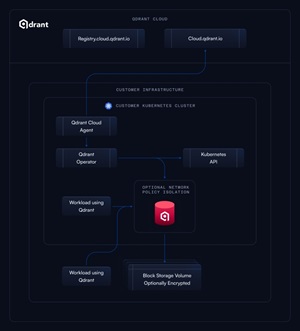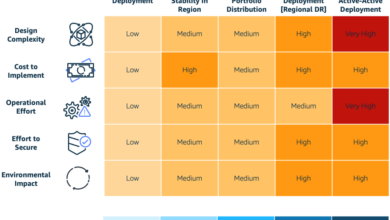New Qdrant Hybrid Cloud Points Vector Database at Enterprise AI — Virtualization Review

New Qdrant Hybrid Cloud Points Vector Database at Enterprise AI
Qdrant is packaging its open-source vector database tech into its new Hybrid Cloud, a managed service deployable into any environment — cloud, on-premises or edge — to boost enterprise AI initiatives.
Vector databases can handle representations of data items in high-dimensional space via “vector embeddings,” making them more suitable that traditional rows/columns databases to back modern AI applications.
“Vector databases have emerged as a critical component for building AI-based (and especially generative AI-based) applications,” the company said in an April 16 news release. The company said its Qdrant Hybrid Cloud advances the field of vector search and enterprise AI, providing a set of features for performance optimization while excelling in handling billions of vectors with efficiency, scale and memory safety.
A blog post explains how the architecture of the new offering ties into Kubernetes, the popular container orchestrator that has turned into a jack-of-all-trades cloud computing system. “By embracing Kubernetes, we’ve ensured that our architecture is both scalable and adaptable,” the company said. “This choice supports our deployment flexibility principle, allowing Qdrant Hybrid Cloud to integrate seamlessly with any infrastructure that can run Kubernetes.”
Other highlights of the offering as presented by Qdrant include:
- Decoupled Data and Control Planes: Our architecture separates the data plane (where the data is stored and processed) from the control plane (which manages the cluster operations). This separation enhances security, allows for more granular control over the data, and enables the data plane to reside anywhere the user chooses.
- Unified Management Interface: Despite the underlying complexity and the diversity of deployment environments, we designed a unified, user-friendly interface that simplifies the Qdrant cluster management. This interface supports everything from deployment to scaling and upgrading operations, all accessible from the Qdrant Cloud portal.
- Extensible and Modular: Recognizing the rapidly evolving nature of technology and enterprise needs, we built Qdrant Hybrid Cloud to be both extensible and modular. Users can easily integrate new services, data sources, and deployment environments as their requirements grow and change.
The Qdrant Hybrid Cloud can run on the “Big 3” cloud computing platforms — AWS, Google Cloud and Microsoft Azure — and the company collaborated with many other cloud providers for the launch, partnering up with Oracle Cloud Infrastructure (OCI), Red Hat OpenShift, Vultr, DigitalOcean, OVHcloud, Scaleway, Civo and STACKIT to offer the hybrid cloud as a managed service.
The company also partnered with AI development tools and framework specialists, including LlamaIndex, LangChain, Airbyte, JinaAI, Haystack by deepset, and Aleph Alpha. Qdrant and its many partners teamed up to provide tutorials on how to build AI applications with Qdrant Hybrid Cloud on the infrastructure of choice.
More information can be found in company documentation.




